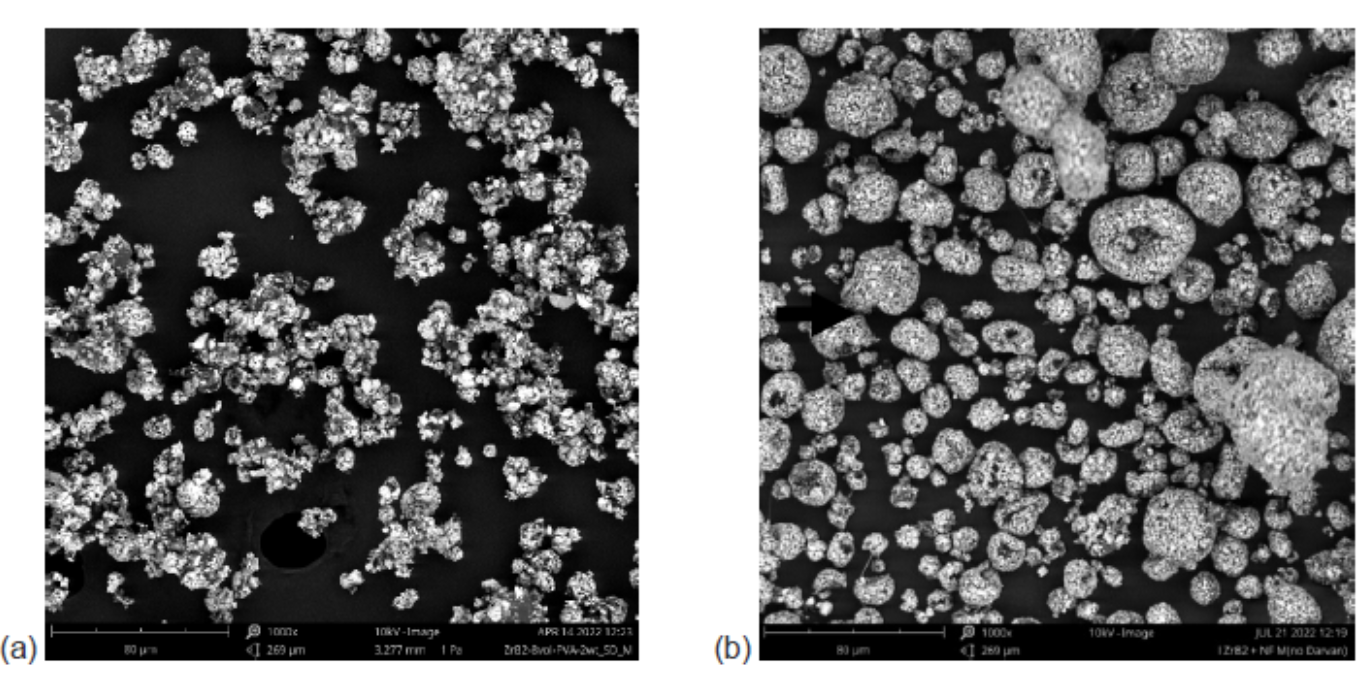Advanced heat resistant coatings are essential for the energy, automotive, and aviation industries. One of the advanced materials being considered for thermal barrier coating applications is ultra-high temperature ceramics (UHTCs), and one of the advanced processes for manufacturing UHTC involves spray drying of nanofibers into the feedstock for 3D printing UHTC. The challenge is producing feedstock that is composed of spherical agglomerates; there is a great need for enhanced powder flowability of these fibers.
LLNL researchers refined custom mixing techniques and formulations in order to avoid clumping and fiber agglomerations for a flowable tailored feedstock that produces a homogeneous, survivable thermal barrier coating. Formulation improvements coupled with unexpected nozzle coupling from Buchi spray dry components leads to the production of fiber containing spray dried feedstock that can survive thermal cycling. The fabrication method produces spray dried ceramic nanofiber composite feedstock.
Image Caption: Incorporating Si3N4 nanofibers into an optimized ZrB2 formulation (a) 8 vol% (ZrB2), PVA 2wt%; (b) 8.5 vol% (ZrB2 + Si3N4 NF), PVA 2wt%
- Value Proposition: Improved performance of large-scale fiber reinforced composites to become ultra-high temperature composites (UHTCs)
- Capability to spray dry difficult-to-process nanofibers to enable high temperature composite thermal barrier coatings
- Ultra-high temperature ceramics (UHTCs)
- Thermal Barrier Coatings
Current stage of technology development: TRL 3
LLNL has filed for patent protection on this invention.


